Joel Shew | |
|---|---|
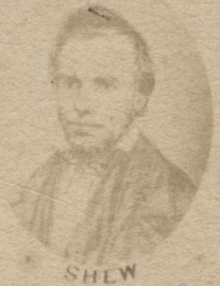 | |
| Born | November 13, 1816 |
| Died | October 6, 1855 |
| Occupation(s) | Hydrotherapist, writer |
Joel Shew (November 13, 1816 - October 6, 1855) [1] was an American physician, hydrotherapist and natural hygiene advocate.
Joel Shew | |
|---|---|
 | |
| Born | November 13, 1816 |
| Died | October 6, 1855 |
| Occupation(s) | Hydrotherapist, writer |
Joel Shew (November 13, 1816 - October 6, 1855) [1] was an American physician, hydrotherapist and natural hygiene advocate.
Shew was born in Providence, Saratoga County. He worked in a daguerreotype shop in Philadelphia and obtained his medical degree in 1843. [2] Shew took interest in hydrotherapy and visited Gräfenberg to study Vincenz Priessnitz's techniques. [3] [4] His wife, Marie Louise Shew was also a hydrotherapist. They were friends of Mary Gove Nichols who had temporarily lodged at their house. The Shews operated a hydrotherapy "water-cure" house and opened it to patients. [2]
In 1844, Shew established the first water-cure institution in New York City. [3] In May 1845, he opened the New Lebanon Springs Water-Cure Establishment, which cost about US$3,000. [5] He was the co-owner and advising physician. David Campbell was its manager for ten years. [5] Shew was influenced by the dieting ideas of Sylvester Graham and promoted natural hygiene practices such as bathing, exercise and massage as well as the elimination of alcohol and tobacco. [3] Historian Stephen Nissenbaum has noted "it is clear that Shew was a Grahamite before he discovered the water-cure". [6] Shew and his wife were vegetarian. [7]
In 1850, Shew wrote notes and additions for the American edition of William Lambe's Water and Vegetable Diet. [8] He died at Oyster Bay, Long Island. [1] An autopsy revealed an enlarged liver and internal lesions. This may have been caused by the chemicals he was exposed to during his earlier career as a photographer. [9]
In 1845, Shew launched The Water-Cure Journal. After 1850, it had a subscription list of 50,000. [3] Russell Trall edited the journal from 1849 and it was later renamed, The Herald of Health. [10] [11] [12]

Hydrotherapy, formerly called hydropathy and also called water cure, is a branch of alternative medicine, occupational therapy, and physiotherapy, that involves the use of water for pain relief and treatment. The term encompasses a broad range of approaches and therapeutic methods that take advantage of the physical properties of water, such as temperature and pressure, to stimulate blood circulation, and treat the symptoms of certain diseases.

Sebastian Kneipp was a German Catholic priest and one of the forefathers of the naturopathic movement. He is most commonly associated with the "Kneipp Cure" form of hydrotherapy, the application of water through various methods, temperatures and pressures, which he claimed to have therapeutic or healing effects, thus building several hospitals in Bad Wörishofen.
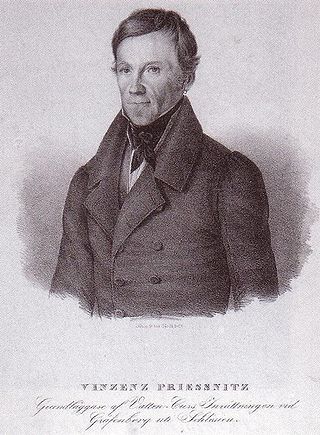
Vincenz Priessnitz, also written Prießnitz was a peasant farmer in Gräfenberg, Austrian Silesia, who is generally considered the founder of modern hydrotherapy, which is used in alternative and orthodox medicine. Priessnitz stressed remedies such as vegetarian food, air, exercise, rest, water, and traditional medicine. He is thus also credited with laying the foundations of what became known as Nature Cure, although it has been noted that his main focus was on hydrotherapeutic techniques. The use of cold water as a curative is recorded in the works of Hippocrates and Galen, and techniques such as spas, bathing, and drinking were used by various physicians in Europe and the US through to the 18th century. The practice was becoming less prevalent entering the 19th century however, until Priessnitz revived the technique after having major success applying it on patients in his spa in Gräfenberg. Priessnitz's name first became widely known in the English-speaking world through the publications and lecture tours of Captain R. T. Claridge in 1842 and 1843, after he had stayed at Grafenberg in 1841. However, Priessnitz was already a household name on the European continent, where Richard Metcalfe, in his 1898 biography, stated: "there are hundreds of establishments where the water-cure is carried out on the principles laid down by Priessnitz". Indeed, Priessnitz's fame became so widespread that his death was reported as far away as New Zealand.
Orthopathy or natural hygiene (NH) is a set of alternative medical beliefs and practices originating from the Nature Cure movement. Proponents claim that fasting, dieting, and other lifestyle measures are all that is necessary to prevent and treat disease.
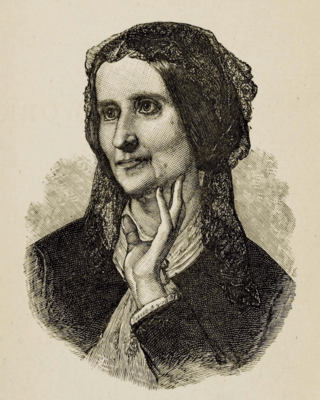
Mary Sargeant Gove Nichols, also known by her pen name Mary Orme, was an American women's rights and health reform advocate, hydrotherapist, vegetarian and writer.
Larkin Baker Coles was an American physician, minister, Millerite preacher, anti-tobacco activist and vegetarian.

William Lambe was an English physician and early veganism activist. He has been described as a pioneer of vegan nutrition.

Harriet Newell Austin was an American hydrotherapist, author, and dress-reform advocate. She was the designer of the "American costume," a style of dress meant to promote women's health.

Russell Thacher Trall was an American physician and proponent of hydrotherapy, natural hygiene and vegetarianism. Trall authored the first American vegan cookbook in 1874.
Sanford Bennett (1841–1926) was an American businessman and writer associated with the physical culture movement, best known for his publications on anti-aging and natural hygiene.

Emmet Densmore was an American businessman, physician and natural hygiene advocate who promoted an early version of the Paleolithic diet.
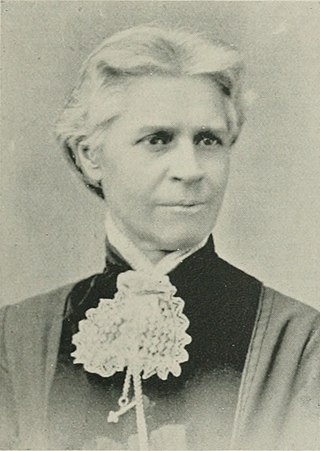
Susanna Way Dodds was an American physician, hydrotherapist and natural hygiene proponent.
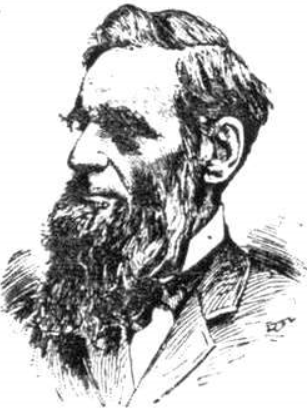
George Herbert Taylor was an American physician and inventor associated with the natural hygiene and physical culture movements. He was known for his practice of homeopathy and introducing Swedish massage to the United States.
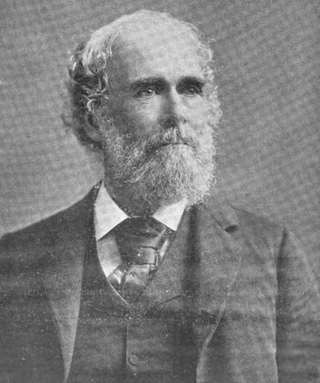
Martin Luther Holbrook was an American physician and vegetarianism activist associated with the natural hygiene and physical culture movements.

George Julius Drews was a German American naturopath and writer associated with the natural hygiene and raw food movements.

Eugene Christian (1860–1930) was an American naturopath, nutritionist and raw foodism writer.
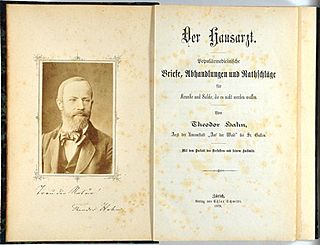
Theodor Hahn was a German hydrotherapist, naturopath and vegetarianism activist.
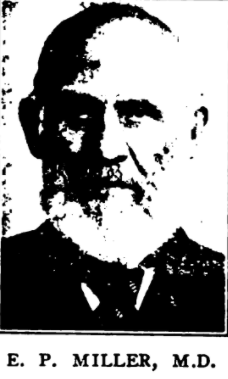
Eli Peck Miller, best known as E. P. Miller was an American physician, hydrotherapist, vegetarian and natural hygiene advocate.

Archibald Hunter was a Scottish hydrotherapist, naturopath and writer.